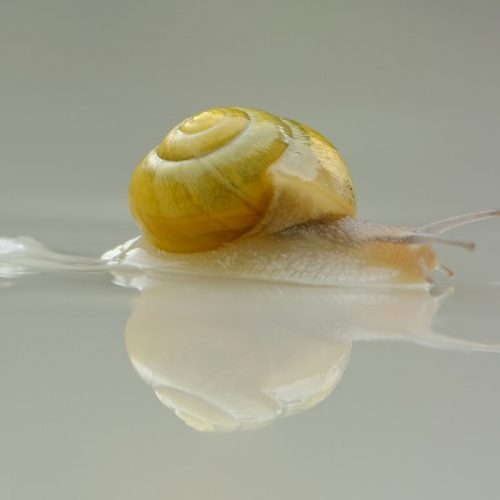The Art Of Making Sourdough Bread
Sourdough bread is often associated with the home-baking boom brought on by the COVID-19 era a few years ago, however this versatile process of bread-making has a long history. Let’s discover it!
To receive the Luxiders Newsletter, sign up here.
Dating back to almost 3000 BC, sourdough bread appears in earliest civilisations such as that of ancient Egypt and Rome. It was the original form of rising bread used throughout human history, until the discovery of commercial yeast in the mid- 19th century.
Sourdough differs from most commercially-sold bread, in that it contains no baker’s yeast. Instead, it relies on a fermented ‘starter’ of water and flour. Its lack of baker’s yeast, and reliance on natural fermentation processes, is the very reason that sourdough is being praised for being nutrient rich and gut-healthy.
THE BENEFITS OF SOURDOUGH BREAD
First of all, sourdough bread is good for your gut. The fermentation process leads to the probiotic properties, which improves gut health. Sourdough bread made with whole grain is especially healthier for being high in fiber.
The fermentation process for sourdough alters the enzymes in the wheat and helps with the digestion of gluten. This is especially beneficial for people with adverse reactions against gluten. It could overall lead to better digestion.
Some research has pointed out that sourdough bread is crucial for healthy aging. Sourdough and other fermented grain-based products have antioxidants, anti-hypersensitive, anti-diabetic properties.
Finally, Sourdough bread can keep blood sugars in a healthy range. Eating carbs can often cause a spike in blood glucose, which can be dangerous for some chronic illnesses such as diabetes. Sourdough bread has a lower glycemic index and glycemic load than white bread and whole-wheat bread.

© Sophie Dale via Unsplash
HOW TO MAKE SOURDOUGH BREAD
The most important part in the sourdough bread-making process is curating the fermentation ‘starter’. This is often the step that turns people off their sourdough journey, because making sourdough bread is not just an art, but also a complex interplay of science and microbiology.
A sourdough starter is a live active culture made of fermented flour and water. It is full of bacteria and yeast that have been captured from the environment. It takes about a week or two for the starter to be ready to be used in making bread.
To make your starter, mix a cup of flour and a cup of filtered water in a bowl. Cover the bowl with a clean tea towel and set aside for 24 hours. On the second day, discard half of the mixture and repeat the process. Add one cup of flour and one cup of water and mix. Cover with a clean towel and leave for a day.
These steps must be repeated for the next three days. On day six and seven, repeat the same steps, but feed the starter every 12 hours. Your starter is ready to use when it becomes bubbly and doubles in size. Alternatively, you can also try a float test to check if your starter is ready. Drop a small amount of the starter mixture into a glass of water. If it floats at the top, it’s ready to be used.
By day 7, the starter will be ready for use. It is necessary to maintain the starter as it can be used for years and years. Refrigerating would be the most appropriate if you only intend to make bread occasionally. Storing in the fridge will slow down the fermentation process, so you need only to feed the starter every once a week. If you intend to use the starter more often, it's best to leave it on the counter and continue the process of feeding it every day.

© Anshu A via Unsplash
To make a perfect loaf of sourdough bread, mix 500g of bread flour, 10 g of seasalt, 250 g of water, 150 g of the active sourdough starter and 25g of olive oil. Squish the mixture together in a bowl, with your hands until the flour is fully absorbed. The dough should feel dry, rough and shaggy. Cover the bowl with plastic wrap and let rest for 30 minutes. After the dough has rested, knead it into a ball directly in the bowl.
Cover the bowl again and let the dough rise. This can take anywhere between 3 to 12 hours. You will know its ready when the dough has doubled in size. About 30 minutes into the bulk rise, you have the option to stretch and fold the bread. It is not always necessary but this step helps add height and structure to the finished loaf. Finally, knead the bread to desired shape.
To achieve an artisan style bread, it is essential to use a baking pot. Typically, people opt for the famous dutch oven baking pot. This pot traps in heat and moisture to help the bread open up and bloom while baking.

© Artur Rutowski via Unsplash
Before you place the bread and baking pot in the oven, you must allow the bread to rise one more time. Coat the bottom of your baking pot with corn meal and place dough inside. Leave it for about 30 minutes to an hour. The dough is ready when it's puffy and no longer dense. Make a slash along the top of the bread to allow steam to escape and dough to expand during baking.
Preheat the oven to 450 F/ 232 C. Place the baking pot with the dough into the oven. Reduce temperature to 400 F/ 204 C. Bake on the center rack for 20 minutes. When 20 minutes is up, remove the lid and continue to bake for an additional 40 minutes or until deep golden brown. The internal temperature should be around 205-210 F/ 96-98 C. Cool on rack for at least an hour before slicing.
Sourdough bread embodies not just a culinary delight, but a rich tapestry of history, science, and tradition. Beyond its delicious taste, sourdough is nutrient-rich and offers potential health benefits. So, whether enjoyed fresh from the oven or incorporated into diverse recipes, sourdough bread remains a beloved staple.
+ Highlight Image: ©Debbie Widjaja via Unsplash
+ Words
Liza Silva
Luxiders Magazine




